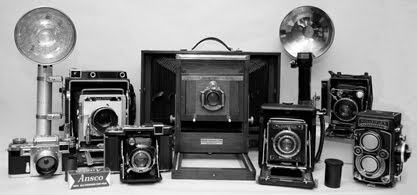Welcome to the January 2010 column of Tips for members, by Caroline Roach. Thanks!
TIP OF THE MONTH"
"Motion" is the topic for our February photo challenge so thought it might be appropriate to have information about motion photography as my first tip of the month. Shutter speed is one of the keys to achieving motion in photography.
Shutter: Mechanical device that controls the moment of exposure and the length of time light is allowed to act on film or the digital sensor.
Shutter Priority: Type of semi-automatic exposure system whereby the photographer sets the shutter and the camera selects the corresponding lens aperature to ensure correct exposure of the scene.
1. Freezing Action
Examples of freezing action include, capturing your favorite race car cross the finish line, capturing the baseball player as he slides into home plate or simply capturing your favorite child as they swing high in the air.
Fast shutter speeds are the key to capturing this type of photography. Using the shutter priority mode where you set the shutter speed and let your camera set the aperture is a start. For ISO's of 50 to 100, a bright sunny day, use shutter speeds of 1/500th of a second to 1/1000th of a second or faster. With shutter speeds this fast a tripod is not necessary. Your camera using shutter priority is going to set the aperture - most likely in this situation it will be a large aperture which will cause your background to be out of focus. To have more detail in your background you can set your ISO to 800 (or high) and shutter sped of 1/500th of a second. This will cause the aperture to be smaller and you will achieve more detail in your background. These are one of a kind photos and you will most likely have to take a bunch to get one really great one - but digital space is cheap so click away.
2. Implying Motion
Waterfalls with their silky waters and sharp backgrounds are one of my favorite images. Another example of implied motion would be capturing a car moving at dusk, the background would be sharp and the car would be blurred. The blurred subject and sharp background implies the motion.
These two situations require a slow shutter speed. Perhaps a shutter speed of 1/2 second or slower. A tripod is a must. Careful attention to your ISO is needed, remember you are shooting in a lower light situation so will need the larger numbers. This also is a trial and error adventure so try different settings,click away and see what you get.
3. Panning
Panning is the art of moving your camera while the shutter is open to keep pace with a moving subject. The subject should appear sharp while the background shoud appear blurred - implying motion. These are outstanding when well done. A great website to get information on how to achieve this type of image is http://digital-photography-school.com/mastering-panning-to-photograph-moving-subjects
4. Using the Zoom Effect
A fun way to add excitement, movement and energy to your images is using the zoom effect. Suzanne Roach has experimented with one with good results. Website http://digital-photography-school.com/using-the-zoom-effect
5. Creating Motion with Camera Movement
This is a technique Sue Henry was perfecting when she attended the Tony Sweet workshop. Basically find something you want to photograph, use your normal camera settings for that particular situation and just move your camera around with the shutter open. It is lots of fun seeing just what you can create. This technique works well with colored lights, flowers, trees, just about anything.
So basically my "Tip of the Month" is "Try New Techniques and Have Fun". I am looking forward to the February meeting and seeing everyone and all their entries in the photo challenge. See you there.
Caroline S. Roach
Sunday, January 31, 2010
Subscribe to:
Post Comments (Atom)


Very useful and informative tips... Thanks Caroline. We look forward to more.
ReplyDelete